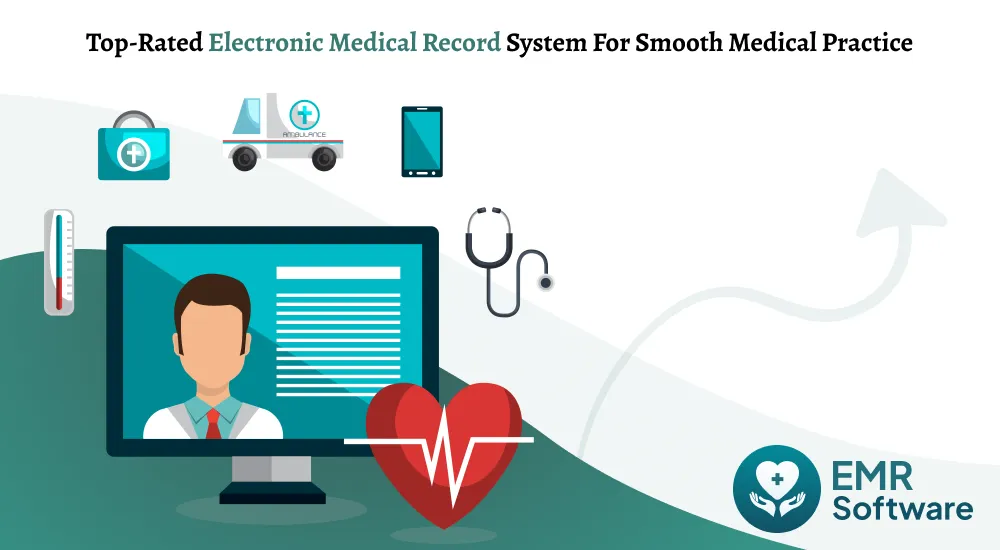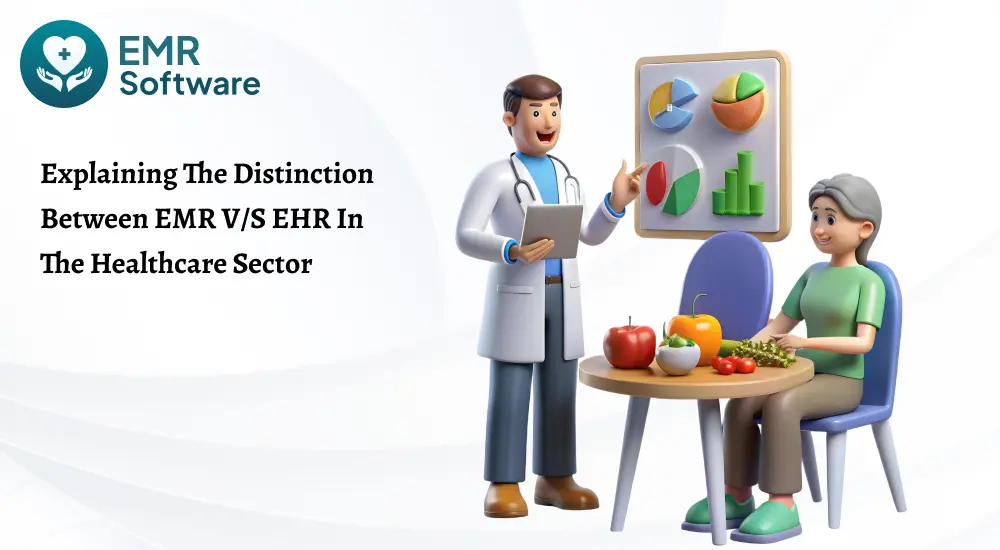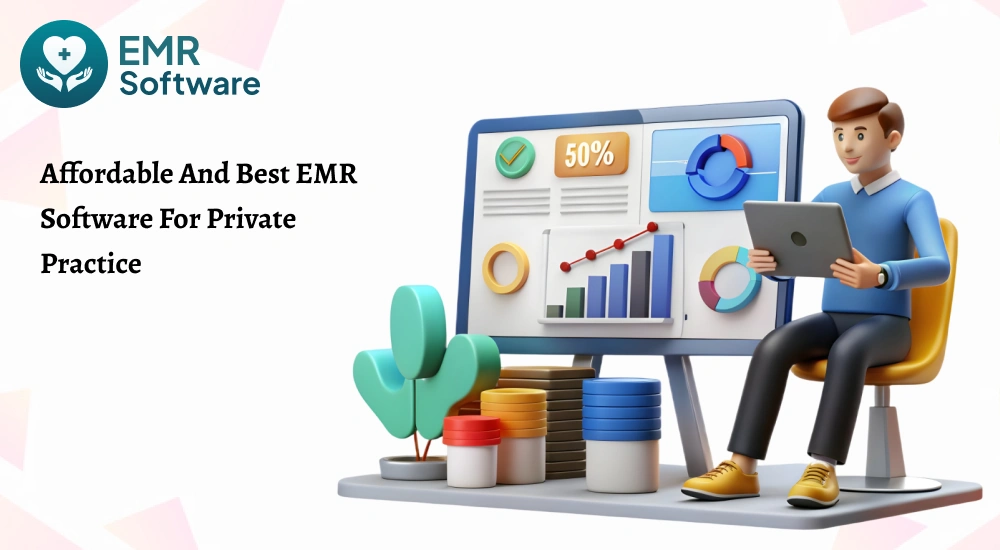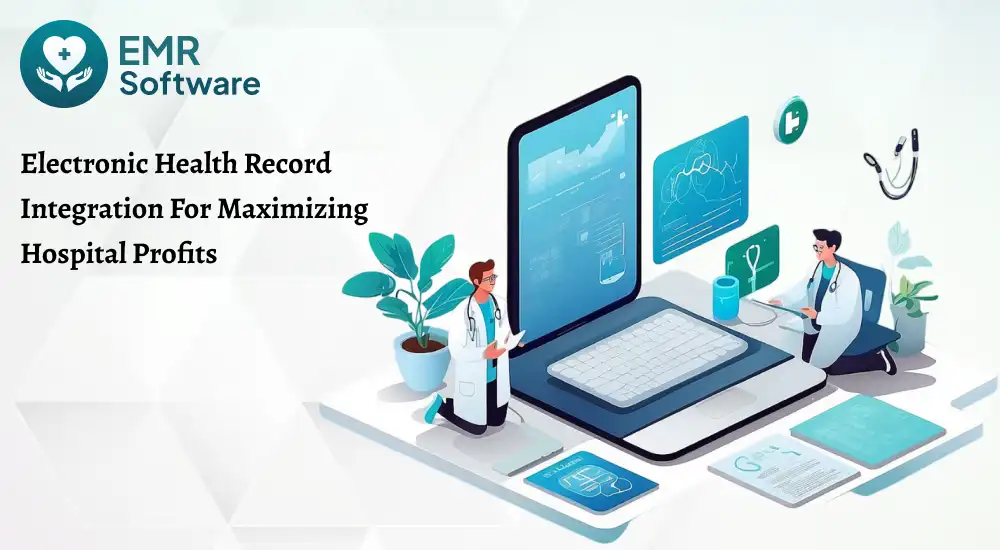Quick Summary
Digitization in hospitals cope up with the customer’s demand and changes in the healthcare eco-system. An electronic medical record system considered as a game-changing platform due to autonomous activities steps forward. Get smooth medical practice to minimize staff burnout, maximize efficiency, enhance data accessibility, and decrease costs.
Introduction
Retaining the healthcare information from appointment history to staff performance reports in the digital form. Get better accessibility, increase data security, improve decision-making process, increase care quality, and elevate workforce performance. In modern times, the use of electronic medical records software fights with hurdles and upgrades quality services.
Satisfying healthcare needs and achieving the departmental KPIs quickly. Moreover, accumulate documents portrayed in the one screen and eases to move from one division to another effortlessly. The EMR software supports quick retrieval of clinical documents, improves practice efficiency, and augments care.
Not only best for transferring and accessibility, but also it facilitates an extensive security to avoid threats and enhances data efficiency. Moreover, the electronic medical record system sharpens the focus on client care services, improves revenue cycle, and flawless coordination with external teams.
Eye-catching Features of Electronic Medical Record System
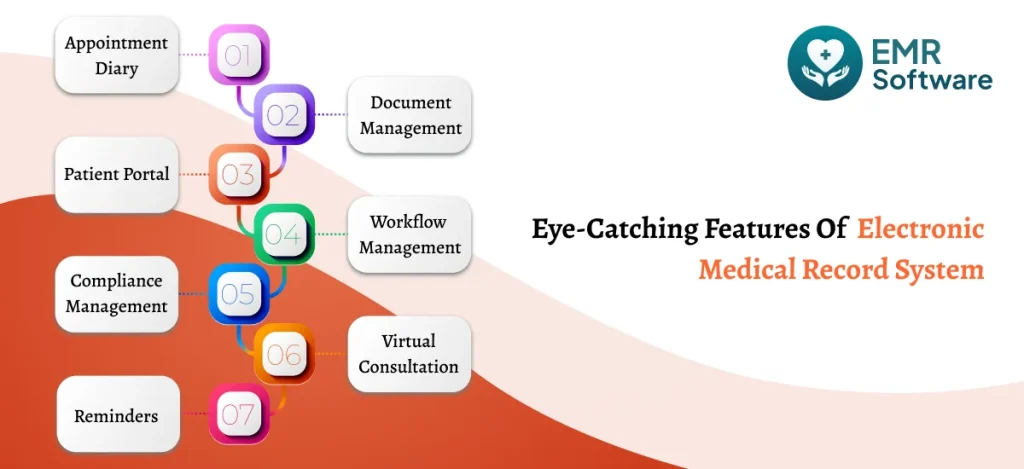
The electronic medical record system heightens the quality of clinical documents, enhances client safety, manages clinical orders, captures invoice details, and improves healthcare workflows. Furthermore, it improves department practice, augments historical information, and increases clinical results. The eye-catching features of electronic medical record system are :
Appointment diary
Supervising clinical appointments requires more time than one can assume. Most of the staff members spend their time attending patient phone calls and fixing the customer appointment. Moreover, the electronic medical record system smooths an appointment procedure and decreases client time on scheduling an appointment.
Streamlining to manage a physician calendar due to advance consultation booking and ease for them to invest their time on customer care. Moreover, it does not waste patients time even if the physician, not able to consult patients on the scheduled date, facilitating instant notification on clients number.
Patient portal
With the EMR software, the clients any time can upload documents and modify information based on the recent medical details. Maintain security with the help of various practices. Moreover, it retains booking history, prescription details, and eases to receive virtual consultation from physicians.
Patient information easily accessible on web or mobile. Moreover, the right electronic medical record system facilitates an effective collaboration with assorted healthcare systems. Ameliorate effortless to transmit documents to any clinical practitioners, lab manager, and pharmacy employees.
Compliance Management
It is extremely crucial to have a secure platform to eliminate legal penalties and avoid court cases. Moreover, the electronic medical records system executes several security practices to upgrade the data quality, maintains clients privacy, and avoids the cyber attackers risks. It reduces stress on remembering guidelines at each phase.
The EMR software system creates constraints in accessing files and transmit only required information. Additionally, it switches tests into coding format. Tracking hospital information to inspect issues and duplicate information.Overall, it increases customer’s faith and augments efficiency.
Reminders
Not only facilitate a medication reminder but you can set as many reminders as you want. Moreover, create the reminder for inventory shortage, before consultation timing, and can set notifications for downloading salary receipts. You can edit the reminder information and personal details of clients.
Enhance security through alerts on missing any clinical guideline. Furthermore, the electronic medical records system enhances client safety, improves workflow efficiency, augments client care, maintains schedules, and decreases any medical error.
Document Management
If you watch the clinical operational department carefully, you find out that the workers mostly create and share documents. Moreover, the electronic medical record system is not eliminating tasks but refining the tasks duties.
Each of the activities related to crafting documents, whether it is to maintain the security guidelines, crafts inventory reports, and generates invoices. Furthermore, the documents have been transmitted within the healthcare department with just a click.
Workflow Management
Holding detailed hospital information such as inventory reports, client records, laboratory documents, medical image documents, and security guidelines. Furthermore, the AI-powered EMR software turns the human intervention task into autonomous tasks from fixing slot timing to generate document forms.
The electronic medical record system addresses the pain points such as finding specific clinical documents, boosts communication with stakeholders, and covers details with protected guidelines. Therefore, it shortens the patient life cycle, improves workflow efficiency, and enhances precision in managing activities.
Virtual Consultation
Patients get any time care through creating coordination via mobile phones and tablets. Moreover, improves the power of reports accessibility due to simplification of sharing clinical reports. Monitoring of client medical reports and observing the variation in major metrics such as blood pressure, sugar level, and etc.
With the electronic medical record system, the provider yields larger income amounts through investing a minimal amount of time. Consequently, it positively impacts clients, decreases the infrastructure charges, and improves physician services.
Understanding the Importance of EMRs (Electronic Medical Records)
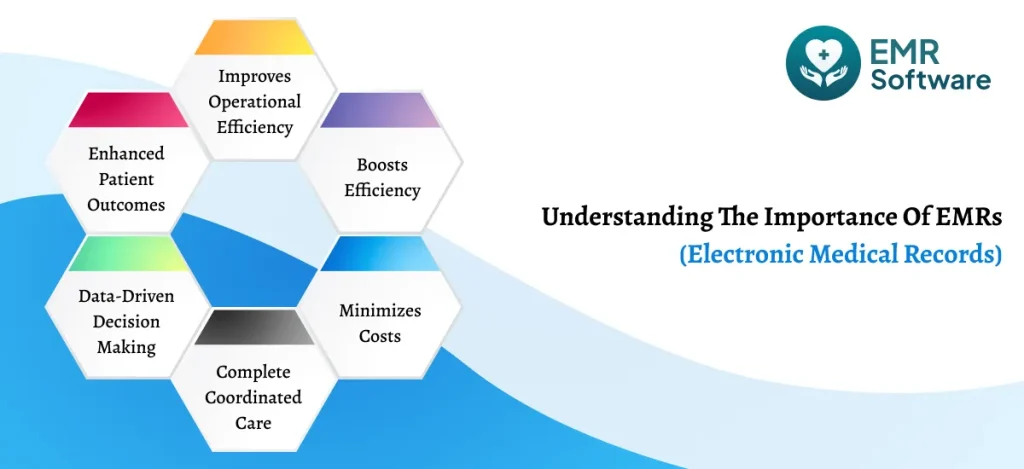
Virtual healthcare system that fills the patient heart with full satisfaction, relaxes the physician mind, and decreases healthcare costs. Moreover, the electronic medical record system furnishes the patient’s insightful information and their historical medical records for understanding the patient case fully and hastens to make a prompt decision. The importance of electronic medical records system include :
Improves operational efficiency
Direct linking to the administrative department and their associated activities contributes to enhancing efficiency. Moreover, the EMR system software encompasses operational tasks such as record management, handle prescriptions, manages orders, controls insurance processing, and analyzes inventory data,
Consequently, it lowers manual processing tasks, preserves documents, and avoids paper expenses.
Enhanced patient outcomes
In this digital age, each of us wants to use modern technologies that preserves time and increases focus on medical productivity. Similarly, the top-rated electronic medical record system furnishes advanced medical technology that simplifies multiple tasks.
Additionally, the EMR system software provides video consultation services, AI technologies to reduce the efforts on analyzing patients reports, and decreases the time of treatment planning.
Data-driven decision making
Performing the document related activities including storing details, reviewing documents, extracting data, and assessing information with the help of graphical reports. Therefore, it smoothes decision making processes and impacts on clinical workflows.
Comprehensive electronic medical record platform from where you take many decisions effortlessly such as inventory related decision, treatment related decision, and regarding patient medical condition.
Complete coordinated care
With the EMR system, streamlining to be in contact with any specialists regardless of its location. Moreover, the physicians can take any advice within a few seconds and enhance their knowledge for providing accurate treatment.
Additionally, the EMR medical record system systemizes documents, secures communication, and administrates patients.
Minimizes costs
Operational activities and legal activities have been done with complete precision in the electronic medical record system. Moreover, it aligns with the client requirement, physician demand, and meets proper guidelines.
Maintaining sustainability through abolition of physical documents and administering healthcare finances.
Boosts efficiency
Supporting in controlling medical finances, decreasing labour expenses by enhancing automation tasks, and helps in saving a large hospital space through reducing the need of a large cabinet.
Additionally, the EMR software helps to write the prescription in the logical format, improves clinical practice, and integrates charting tools for drafting versatile templates in just a few minutes.
Smooth Medical Practice With the Top- rated EMR System

Handles the increasing demand of patients, improving the physician facilities, and decreasing the holistic hospital infrastructure. Moreover, the top-rate electronic medical record system protects historical and current medical information, enhancing data security, increasing the precision in creating prescriptions, supervises financial information, and decreases clinical expenses.
Reshaping the way of handling administration services such as drafting customized prescriptions, lowering clinical mistakes, decreasing unnecessary procedures, improving healthcare services, and enhancing patient outcomes. Additionally, it protects against adverse events, improves coordinated care, and enhances efficiency.
Conclusion
EMR Software, the top-rated electronic medical record system for improving preventive care and augments ROI (return on investment). Moreover, the eye-catching features of EMR software include appointment diary, patient portal, compliance management, reminders, document management, workflow management, and virtual consultation. The importance of an electronic medical records system includes improving operational efficiency, enhancing patient outcomes, data-driven decisions, complete coordinated care, and boosts efficiency. Therefore, these functionalities smooths clinical practice and augments clinical performance.
